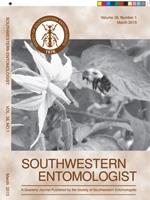A diversity of crops is grown in Mexico. Of the plants that produce fruits and/or seeds for human consumption, 85% depend to some degree on pollinators for efficient production. Mexico also has a great diversity of native bees, some of which have been recognized as having potential for use as managed pollinators; defined as a semi-domesticated species, produced in large quantities, and bought and sold commercially. The objective of the present work was to review the species of bees presently commercially available in Mexico as managed pollinators and to analyze in particular: 1) their commercial availability, 2) crops for which they are used, and 3) the perspectives for their sustainable use and conservation. Presently, only two species of bees are used commercially in Mexico: the honey bee, Apis mellifera L., and the common eastern bumble bee, Bombus impatiens Cresson. Mexican native bee species have been used experimentally, but at this time, none is commercially available. The principal threats to the conservation of native bees in Mexico are the elevated rate of deforestation combined with intense use of agrochemicals and particularly insecticides for control of pests in extensive monocultures. Continued research and conservation programs considering native bee species are needed to ensure the survival of as many species as possible to provide a wide array of biological characteristics with potential for use as managed pollinators in Mexico. This is critical to ensure the future necessities of the wide diversity of Mexican crops with unique agronomic characteristics within the diversity of habitats where they are cultivated.
How to translate text using browser tools
1 March 2013
Present and Potential use of Bees as Managed Pollinators in Mexico
Alfonso Torres-Ruiz,
Robert Wallace Jones,
Ricardo Ayala Barajas
ACCESS THE FULL ARTICLE

Southwestern Entomologist
Vol. 38 • No. 1
March 2013
Vol. 38 • No. 1
March 2013




